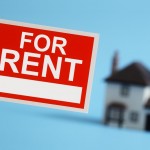British rental prices rose by 2.7% in the 12 months to September, with Londoners seeing the biggest increase. The latest figures from the Office for National Statistics show that rents increased in all Great British regions over the past year. Tenants are now paying an extra 4.1% in the capital, where price increases have been stronger […]
 British rental prices rose by 2.7% in the 12 months to September, with Londoners seeing the biggest increase.
British rental prices rose by 2.7% in the 12 months to September, with Londoners seeing the biggest increase.
The latest figures from the Office for National Statistics show that rents increased in all Great British regions over the past year.
Tenants are now paying an extra 4.1% in the capital, where price increases have been stronger than the rest of England since November 2010.
England saw the largest growth in rents of 2.8%, although when London was excluded this figure was 1.9%.
Growth was 1.6% in Scotland and 0.5% in Wales.
The ONS said rent growth was 2.7% in the South East and East, while the North East saw growth of 0.5%.
Rents are now growing at their joint-fastest annual rate since October 2012. However, the ONS pointed out that figures do mask a regional variation, with growth slowing in Scotland and Wales.
The increase in the price of rented accommodation is being driven by the growing demand for rental properties coupled with low supply, making competition for property fierce.
Stuart Law, CEO of Assetz for Investors, said the figures indicated landlords were likely to prosper in the year ahead, despite the likely interest rate hike in the New Year.
“With Chancellor George Osborne’s devolution deals now covering both Manchester and Sheffield, with strategies in place to extend his Northern Powerhouse plans to the North East and Tees Valley regions, the north is set to experience a significant boost in local growth and an increased demand for housing as job creation and regeneration takes hold. This is likely to increase rental prices in the region further, which will see buy-to-let investors favouring these parts over the next few years.”
John Goodall, CEO of Landbay, said “The big trends pushing up rents are the booming job market and the high cost of buying a home, meaning that many are renting for later into life than before.
“The rapid rise in rents for three bedroom homes, particularly in areas like Southend on Sea (up 15%) and Windsor and Maidenhead (up 13%), suggests that families are upping sticks and moving to new areas to take up new jobs. When they do that they usually rent first and buy later. The high cost of buying also means that some people are being priced out of homeownership and are renting for longer. The higher demand this creates for rental properties pushes up rents because supply isn’t keeping pace.”














